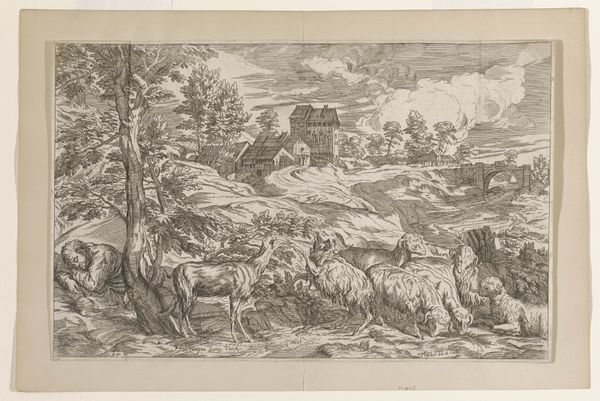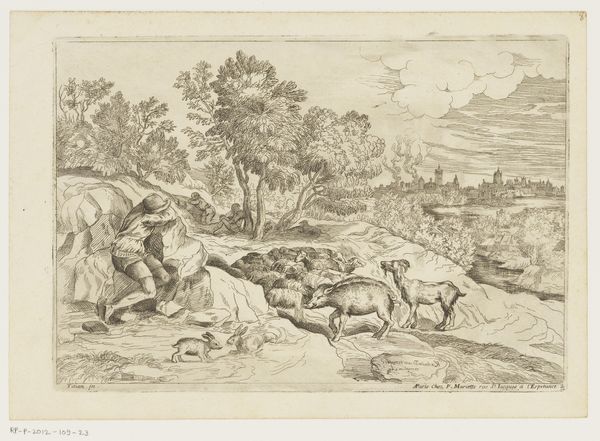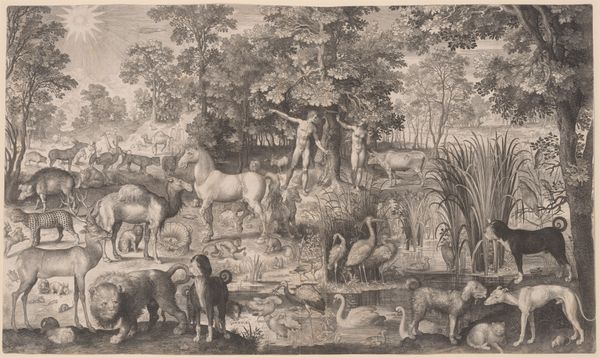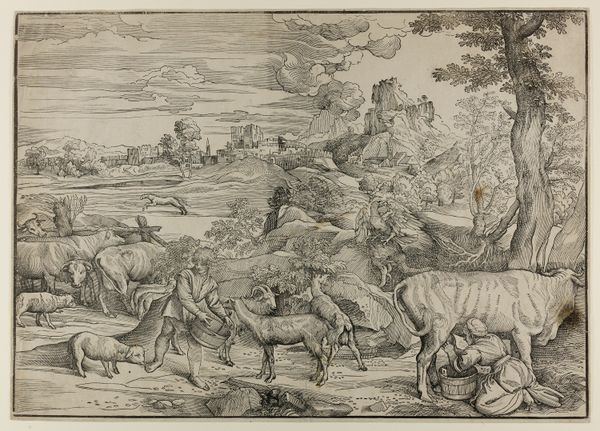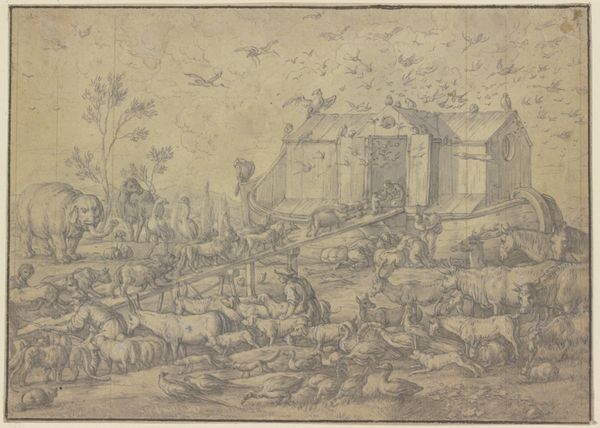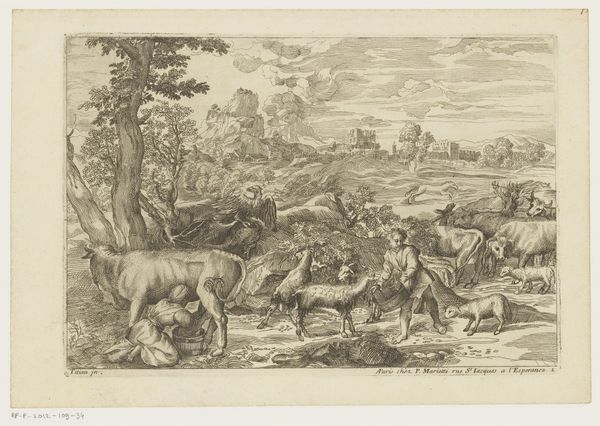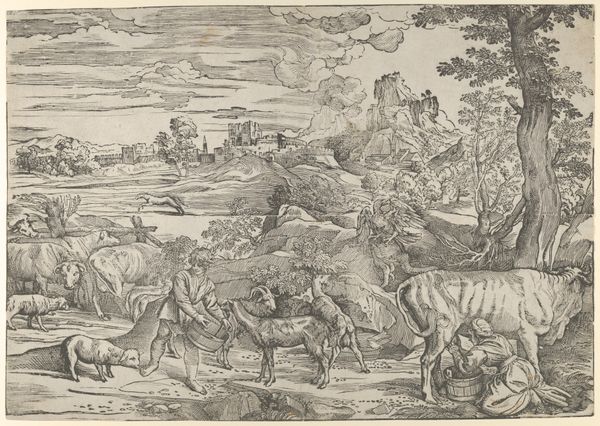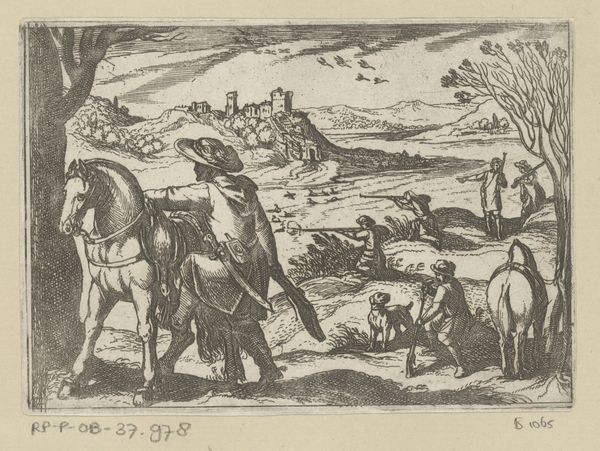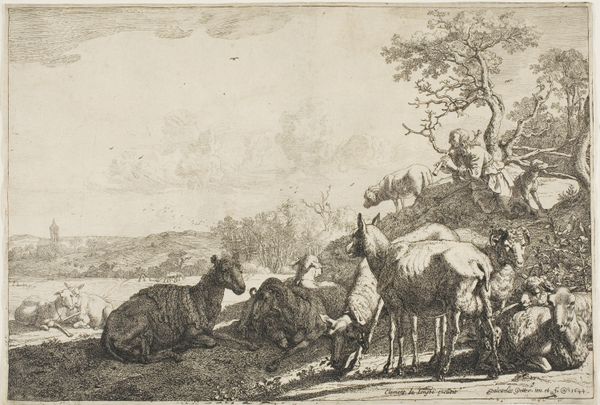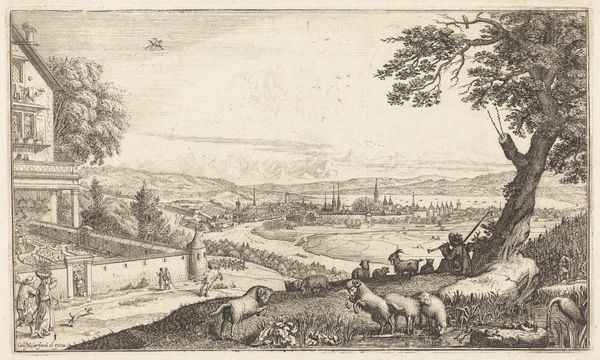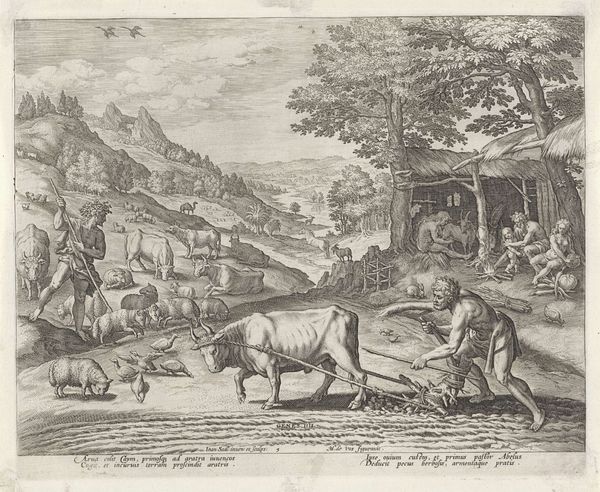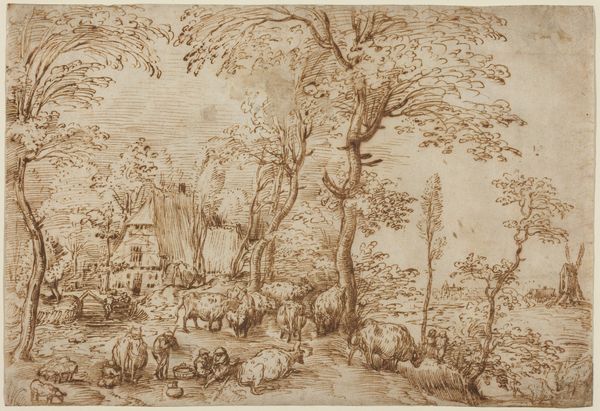
print, etching
#
narrative-art
# print
#
etching
#
landscape
#
mannerism
#
figuration
Dimensions: height 274 mm, width 427 mm
Copyright: Rijks Museum: Open Domain
Editor: Here we have "Landschap met vee," or "Landscape with Cattle," an etching by Battista Angolo del Moro, dating from 1550 to 1573. It’s a busy scene, with so many different things happening! What do you see in this piece? Curator: It is teeming with cultural memory, isn't it? Consider the landscape itself. The pastoral scene, rendered with such detail, immediately evokes a sense of Arcadian simplicity, a visual trope with roots stretching back to classical literature. The animals represent something about plenty and also being yoked, think of our relationship with animals over the long haul. How does the distant cityscape contrast with this immediate foreground? Editor: I hadn't thought of the "Arcadian simplicity" before, that's a neat link! It does seem idealized, but the city is also quite small. Maybe it's meant to represent what society depends on: the town needs the cattle and dairy products from the countryside in order to thrive. Curator: Precisely! And consider the figures populating this landscape. Their clothing and activities echo societal values and relationships of that time. Are they simply tending to the cattle, or might their gestures also tell us about familial connections or the role of humans within this cultivated space? What are they trying to communicate about an economy or a social role? Editor: Oh, it's interesting that you focus on the people in that way. So their position or clothes might actually hint to specific social standing? I wonder how the presence of that boat over on the far right informs the cultural story… Curator: Exactly. See how the image creates this layering effect that can both celebrate human activity while contrasting that activity to civilization. Even in what appears to be mere scene-setting, can you decode signs of historical values and belief systems that help explain how the people relate to that time and what its collective memory really means? Editor: That's really fascinating. It's made me rethink how seemingly straightforward landscape scenes can be, when you consider symbolism and context. Curator: Absolutely. Next time you see a work, look beyond the surface. What story is it telling and what memory is it preserving?
Comments
No comments
Be the first to comment and join the conversation on the ultimate creative platform.
